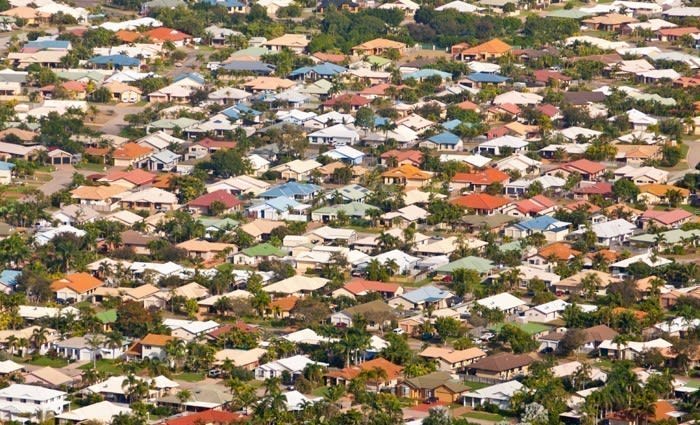Foreigners not to blame for vacant ghost homes: SGS Economics
Only a small fraction of the one million vacant dwellings on the 2016 census night were likely owned by foreign investors.
An analysis of the August census results by the economic consultancy SGS Economics has gone towards debunking the suggestion that foreigners are contributing to a housing shortage by leaving their homes empty.
SGS found the largest concentration of unoccupied dwellings was in the regions, reflecting lack of accomodation demand, rather than in the overbuilt capital cities where new apartment construction has been at record levels.
The firm’s analysis of the census shows that people being away from home was by far the most common reason for empty dwellings on census night, accounting for 453,000 properties.
There were also 237,000 holiday houses unoccupied.
The likely total of stock deliberately kept out of use was small, SGS economist Terry Rawnsley said.
The 2016 result was the highest vacant recorded over the time period analysed by SGS Economics from 1981 to 2016.
Region | Dwellings | Vacant share of total |
Greater Sydney | 136,019 | 7.3% |
Regional NSW | 148,683 | 12.4% |
Greater Melbourne | 167,494 | 9.1% |
Regional VIC | 111,136 | 16.1% |
Greater Brisbane | 68,386 | 7.6% |
Regional QLD | 127,171 | 11.7% |
Greater Adelaide | 47,396 | 8.4% |
Regional SA | 44,829 | 22% |
Greater Perth | 85,744 | 10.5% |
Regional WA | 47,137 | 18.6% |
Greater Hobart | 8,806 | 8.9% |
Regional Tas | 23,323 | 16.3% |
Greater Darwin | 5,529 | 10% |
Regional NT | 5,184 | 15% |
ACT | 12,590 | 7.7% |
Other Territories | 376 | 19.5% |
"With the 2016 census being broadly in line with historical levels we can't blame investors intentionally leaving homes vacant or the rise of Airbnb," Rawnsley told Fairfax Media.
"There might be 180,000 dwellings falling into this 'withheld-from-market' category, but it's not going to be one million."
Around 55,000 homes were vacant as they had just been completed, while a further 47,000 were being renovated or repaired.
A further 16,000 were awaiting demolition, the SGS report said.
Although the number unoccupied was higher in the latest census, it rose only from 10.7 per cent of all dwellings to 11.2 per cent. The figure has been around 10 per cent since the 1980s.
Sydney’s pricey property market had only 7.3 per cent of dwellings vacant, the lowest rate in the country. Regional South Australia, by contrast, has 22 per cent of its housing empty.
Empty homes are most often found in areas that suffer a loss of major industries or where there is a large number of holiday homes.
While Sydney's inner suburbs had a rate of 9.5 per cent, this fell in regional areas such as Shoalhaven, where 26.1 per cent of homes were empty on census night.
In Greater Melbourne, the rate was 9.1 per cent – but higher in the inner suburbs 11.1 per cent of homes were vacant. However on the Mornington Peninsula this at 22 per cent due to holiday homes.
The Australian noted both federal and state governments have imposed punitive taxes on foreign investors who leave properties vacant, on the basis of suggestions that Chinese buyers are seeking assets in Australia for financial security rather than for return.
This year’s budget included a penalty for foreign-owned properties left vacant for more than six months, levied at $5000 for properties worth less than $1 million and a sliding scale for properties worth more.
It has however yet to be implemented.
